Automate remote desktops, Citrix applications, games in 2D and 3D and anything else you can see on screen
The LEAPWORK Automation Platform lets both technical and non-technical specialists design automation flows, without ever typing or reading a single line of code – and then execute cases with the click of a button.
The LEAPWORK Automation Platform is a fully featured automation tool. Users can build and execute automation cases from day one with the flowchart-based designer.
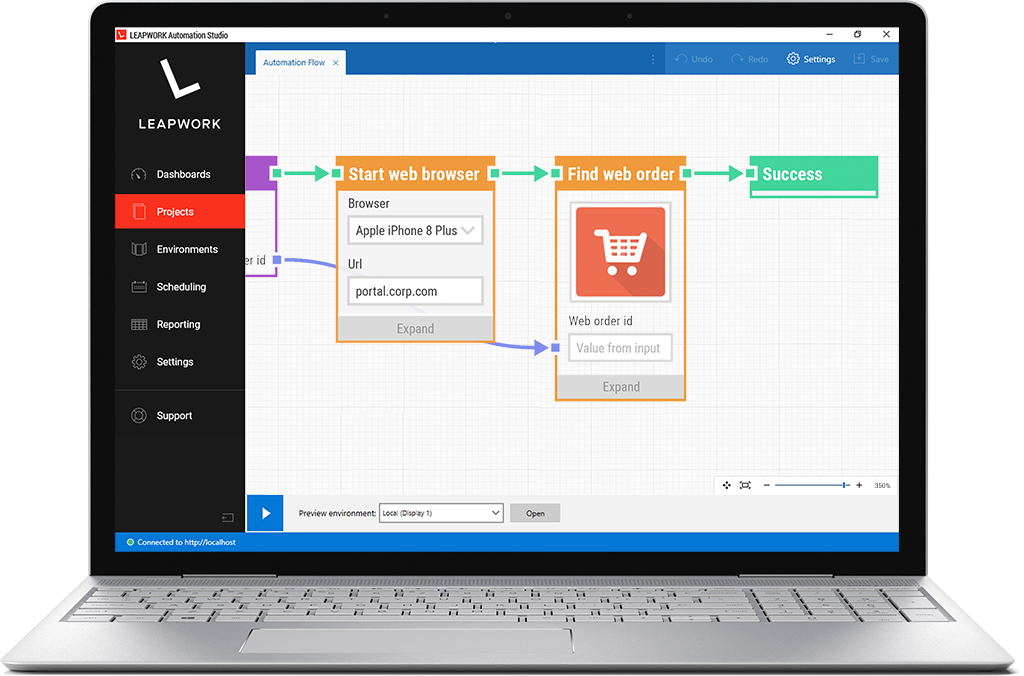
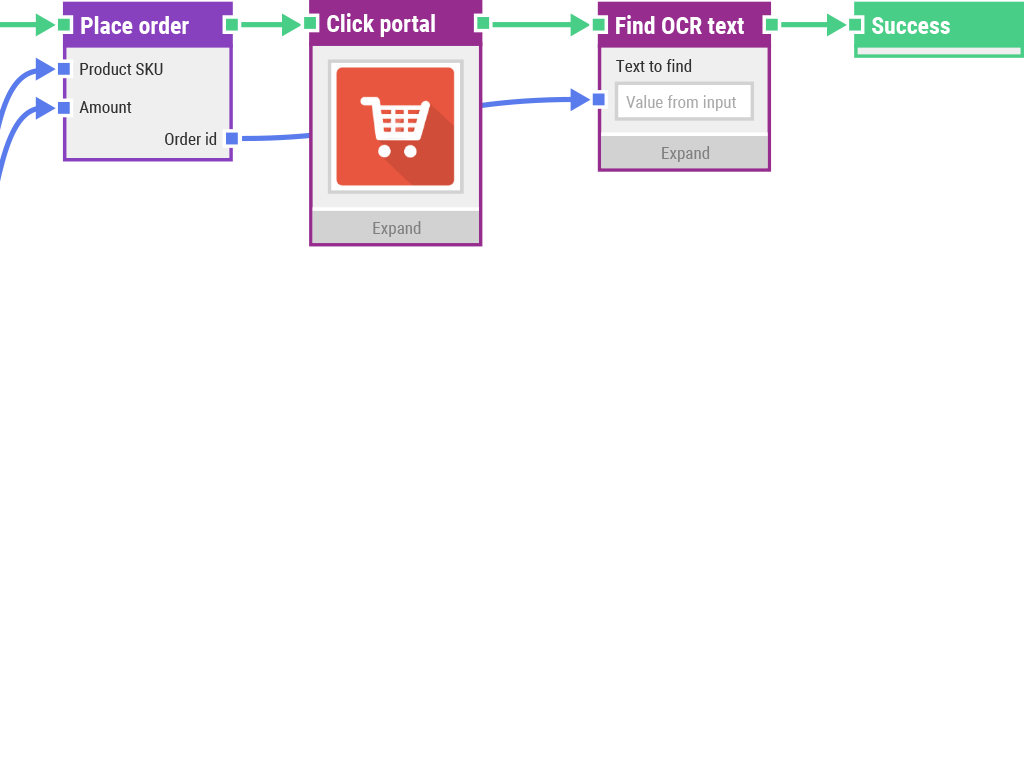
Remote applications that only render finished pixels on a screen cannot be automated with regular automation approaches. This is true for remote desktops and Citrix applications, but also graphics applications, games (both 2D and 3D), and Java applets, to name a few. The LEAPWORK Automation Platform handles this specific challenge using image recognition technology, enabling automated remote testing of virtual desktop applications running any operating system in any desktop virtualization software.
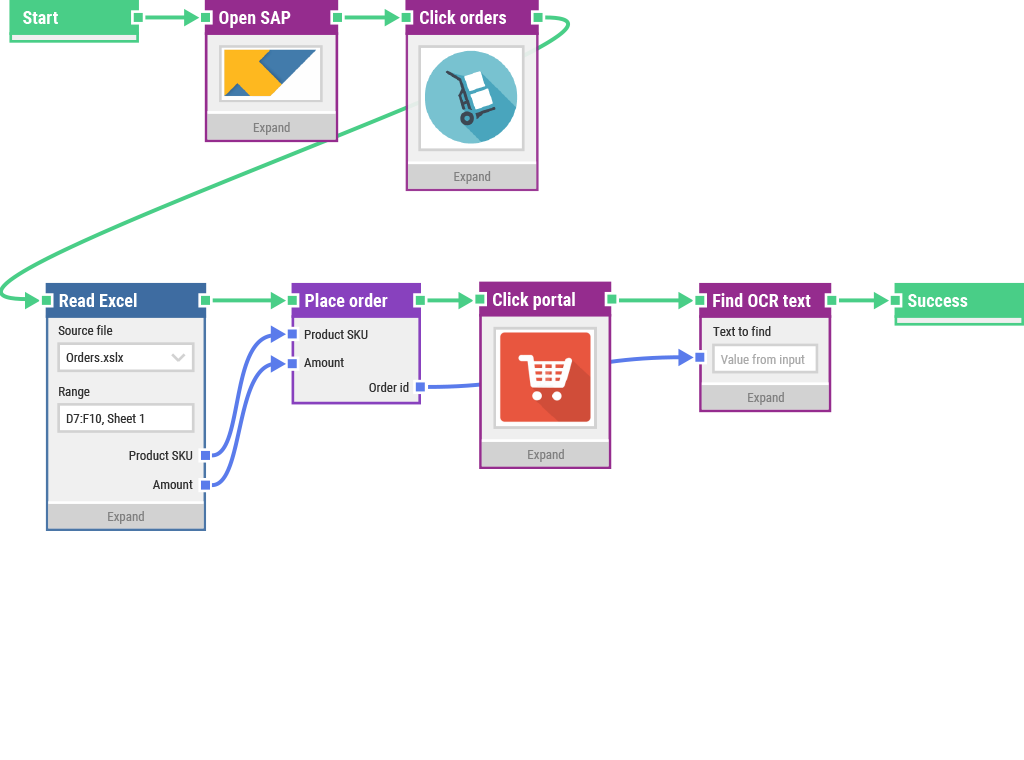
The LEAPWORK Automation Platform comes with an entire set of automation blocks for all actions related to image and text recognition. These include finding, selecting, and getting text and image elements as well as controlling any mouse and keyboard action.
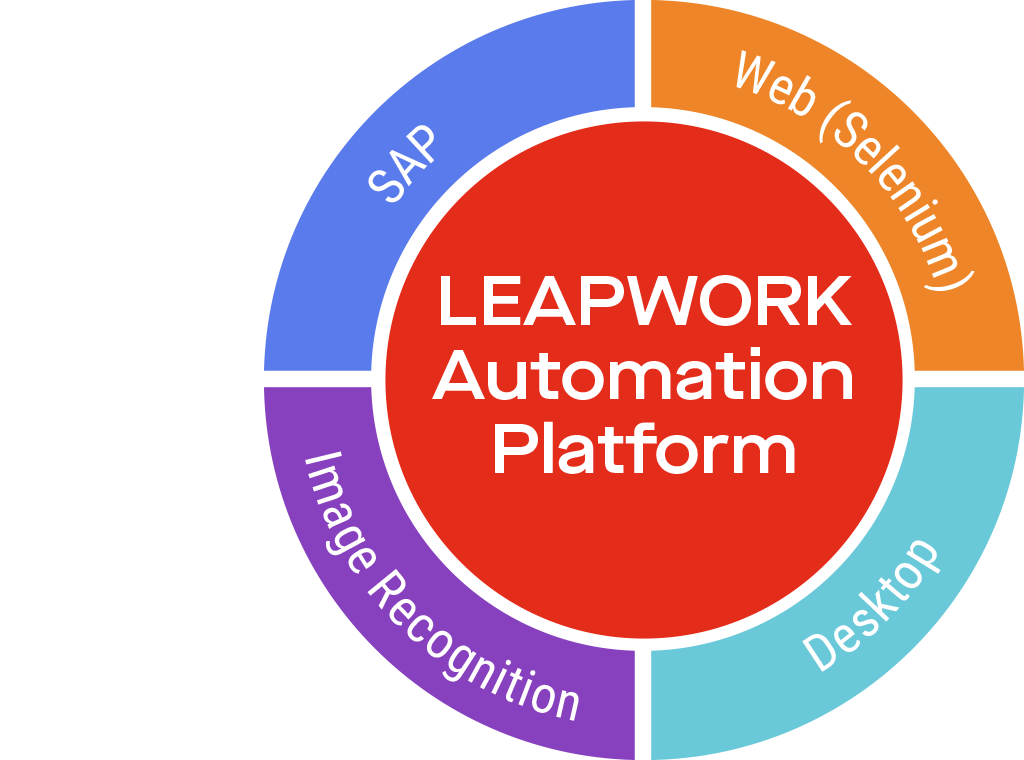
Besides the image recognition automation capabilities for remote desktops, the LEAPWORK Automation Platform relies on different UI automation technologies, each solving specific types of automation challenges. They make it possible to automate any kind of application; from SAP, Citrix, and desktop applications, both in-house and cloud based, to web applications in desktop browsers and on mobile devices.
Maarten
Test Engineer, Voogd & Voogd
Steve
Senior QA Analyst, Equitable Life Insurance Company of Canada
Sebastian
Software Engineer, Samutec
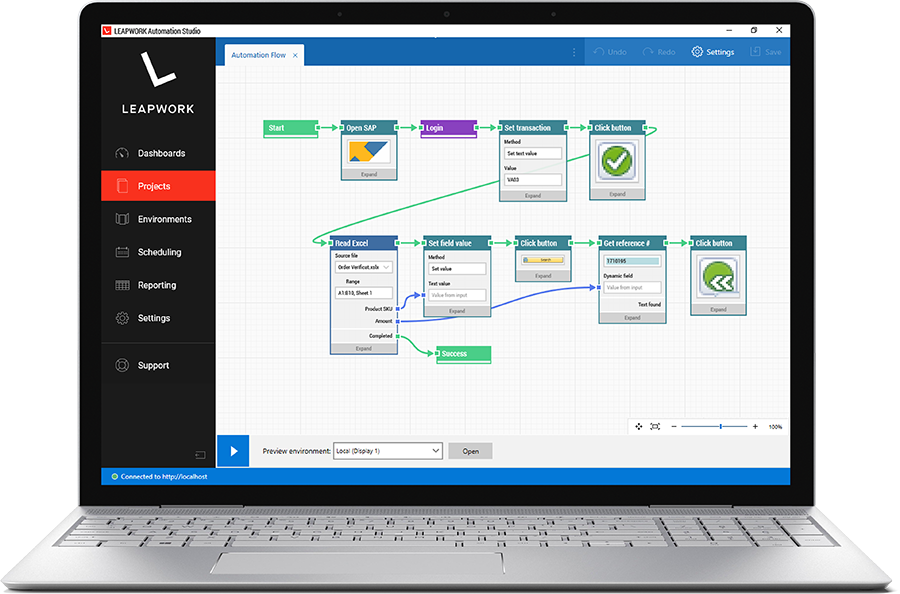
The LEAPWORK Automation Platform enables do-it-yourself remote test automation without the need for programming. Automation cases are built as flowcharts on a design canvas by putting together powerful building blocks. The blocks include all the logic needed for automating technologies.
Design, execute, schedule, and monitor automation in one place. Work on automation cases in teams, share project assets, and set up feedback loops across departments. The LEAPWORK Automation Platform is a tool for specialists, generalists, and management alike.
With LEAPWORK, you are never alone. Our skilled automation specialists are available on-demand for live support and to answer questions on all technical levels. Online help articles, product documentation, and an extensive Learning Center are all freely available.
Run automation cases on any device. Do it on premises, in closed networks, or in the cloud. A centralized Controller component takes care of scheduling and monitoring.
Plug LEAPWORK into your CD pipeline and integrate with build and release systems using our public REST API. LEAPWORK comes with native plugins for Jenkins, TFS, TeamCity, and Bamboo and can also be integrated with bug management systems. Set up triggers for scripts, web services, and more.
Automate seamlessly across systems and environments, e.g. between a website and a desktop application. Even data can be transferred between applications within the same flow.
Any parts of UI automation flows can be re-used between cases, shared across teams, and be parameterized as needed. Never build the same sequence more than once.
Run cases with automated data input from spreadsheets, databases, PowerShell scripts more. Call external sources through APIs and HTTP requests and use the results live in cases.
Improve the reliability of automation cases by setting up fail-safe methods for how LEAPWORK interacts with application elements. By using the Strategy Editor, you can define an approach for retrieving any element specified in automation cases.
Scheduling of automation cases is completely customizable in terms of frequency, time of day, and more. Cases can be executed on an ad hoc basis or be scheduled to run as often as needed around the clock.
When executed, every single step and activity in an automation case are documented in three ways: A video recording, a debugging view, and a text log with timestamps. This makes it very easy to go through automation cases step by step for troubleshooting and identifying where cases fail.
Make the right decisions with powerful live dashboards and reports. Reports are exportable and fully customizable by using filtering and grouping options. Visualize case performance data using dashboards of charts and widgets.